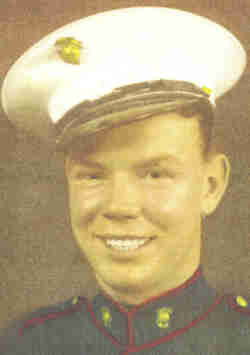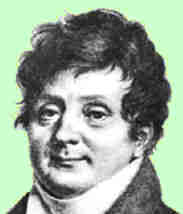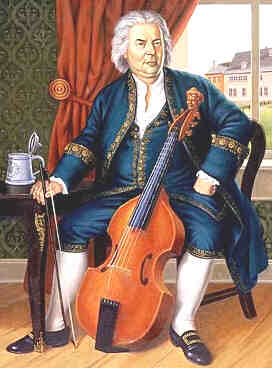Deaths
which occurred on a March 21:
2004 Jose
Geraldo Soares, 43, of a heart attack in the afternoon, half way
through the Mel Gibson movie The Passion of the Christ, which he
was watching in one of the two movie theaters at a Belo Horizonte, Brazil,
shopping mall which he, a Presbyterian pastor, had booked for the congregations
of two local churches.
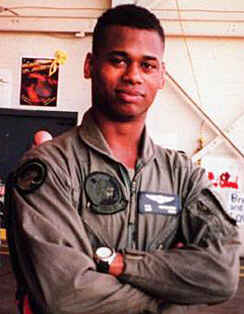 2004
Two Iraqi civilians by two rockets which miss their target, the
US-led occupation headquarters in Baghdad, Iraq. Five Iraqi civilians are
wounded. One US soldier is wounded by a third rocket which hits the headquarters
compound. 2004
Two Iraqi civilians by two rockets which miss their target, the
US-led occupation headquarters in Baghdad, Iraq. Five Iraqi civilians are
wounded. One US soldier is wounded by a third rocket which hits the headquarters
compound.
2004 A 1st Armored Division soldier and an Iraqi
interpreter, in Baghdad's western Abu Ghraib district, by a bomb
exploding near a US patrol. Three US soldiers are wounded.
2004
Ibrahim Homan, 26, an Islamic Jihad fighter, of wounds from Israeli
army gunfire sustained near the Netzarim enclave settlement in the Gaza
Strip, at the beginning of March 2004.
2003:: 2nd Lt. Therrel
S. Childers, 30; Lance Cpl. Jose Gutierrez, 22, US Marines killed
in action as the US invades southern Iraq and their units advance on the
Rumeila oilfield.
2003:: 8 British Marines:
Color Sgt. John Cecil; Lance Bombardier Llewelyn Karl “Welly”
Evans; Capt. Philip Stuart Guy; Sholto Hedenskog; Sgt. Les Hehir; Operator
Mechanic Second Class Ian Seymour; Warrant Officer Second
Class Mark Stratford; Major Jason Ward ;
and 4 US Marines: Staff Sgt. Kendall Damon Waters-Bey, 29
[photo >], Maj. Jay Thomas Aubin, 36;
Cpl. Brian Matthew Kennedy, 25,and Capt. Ryan Anthony
Beaupre, 30, pilot of their 2-rotor CH-46 Sea Knight transport
helicopter which crashes at 03:37 (00:37 UT) in Kuwait, 15 km from the border
of Iraq attacked by the US and UK.
2003 Two Indian
Special Forces jawans, Koushal Chandra and Subash
Chandra; and two Kashmiri patriots of those who
ambushed the Indian patrol at Pindi Jamola in Kalalkas area in Rajouri district
of Jammu (Indian-occupied Kashmir).
2002 Yitzhak Cohen,
of Modi'in, and Tzipi Shemesh and Gad Shemesh, of Pisgat Ze'ev; and Mohammed
Hashaika, 22, suicide bomber of Al Aksa Martyrs Brigade, from the
West Bank village of Talooza, north of Nablus. The explosion occurs at 16:15
in the Jerusalem downtown shopping area on King George Street outside the
Aroma café. 86 are injured. — The Bank of Israel estimates that
the al-Aqsa intifada, has cost Israel $2.4 billion in revenue from October
2000 to December 2001, including a $2.1 billion decrease in revenue from
tourism.
2002 Herman Talmadge, 88, Democrat,
Georgia's governor (1948-1954) and US senator (1957-1981), who was a segregationist
until about 1970. He was born on 09 August 1913.
2001
Chung Ju-yung, 86, Hyundai founder.
^top^
Chung Ju-yung helped forge South Korea's economic miracle but personified
the cronyism that accompanied it. Chung has been in and out of the
hospital since August 2000, suffering from fatigue and loss of weight.
Despite his once-mythical status in South Korea's corporate world,
Chung's reputation was tarnished by the failure of his troubled Hyundai
conglomerate to aggressively pursue reforms. Chung had retired from
management of the 170'000-employee group — South Korea's largest
conglomerate — but until a few months before his death retained
significant influence over businesses that include the world's leading
shipyard and computer memory chipmaker.
Once a symbol of commercial might, Hyundai has been plagued by liquidity
problems, inner-circle strife and criticism from the government that
it has failed to move swiftly enough to slim down its overstretched,
family-controlled portfolio. Still, Chung remained a widely respected
figure in South Korea for his central role in the revival of an economy
that had been shattered by the 1950-53 Korean War. He was also a key
player in Seoul's efforts to engage communist North Korea, launching
a $942 million tourism project at a scenic mountain in the North in
late 1998. However, that project is now in financial trouble. On several
occasions, Chung traveled to the North to discuss business ventures
with the North's leader, Kim Jong Il.
Chung's career mirrors South Korea's transformation from an impoverished
land to one of the biggest economies in the world. Born into a poor
farming family in what is now North Korea in 1915, Chung got his start
in business by selling his father's cow, running away with the money
and selling rice from a bicycle in Seoul at age 16. Soon afterwards,
he started a car repair shop which later grew into a major construction
company doing business in Korea and abroad. Money earned went into
other businesses, including the shipyard. Hyundai Heavy Industries,
the world's largest shipbuilder, now sits on what was once a barren
rural seashore. It is one of about 50 subsidaries of Hyundai, whose
combined sales reached $70 billion in 1999.
Chung's empire included Hyundai Motor Co., South Korea's largest auto
firm, and Hyundai Electronics Co., a major global memory chipmaker.
His business also included oil refining, banking, shipping and construction.
Despite his business achievements,
Chung's longtime collusion with South Korea's former authoritarian
rulers was a source of controversy. In 1991, he sought a political
career but ended up a distant third in a presidential race. After
the election, Chung was forced to stand trial for election law violations.
He was found guilty of diverting $81 million in Hyundai money to his
campaign and sentenced to three years in prison. Because of his advanced
age, the jail sentence was suspended but two dozen Hyundai officials
were jailed for involvement in the tycoon's illegal campaigning. Chung's
efforts to get a business foothold in North Korea matched President
Kim Dae-jung's policy of pursuing contacts with the North, for which
Kim won a Nobel Peace Prize last year. But none of the projects were
profitable and they depleted Hyundai's limited financial resources
in the midst of Asia's 1997-98 currency crisis. |
1988 Darío Morales, pintor, grabador y escultor colombiano.
1985 At least 21 demonstrators marching to mark the 25th
anniversary of the Sharpeville massacre, as police in Langa, South Africa,
shoots at them.
1981 Michael Donald, a black teen-ager
in Mobile, Ala., abducted, tortured and killed in a Ku Klux Klan plot. A
lawsuit brought by Donald's mother, Beulah Mae Donald, later would result
in a landmark judgment that bankrupts one Klan organization.
1972
Some 130 civilians in Phnom Penh area shelled by Khmer Rouge.
^top^
In Cambodia, more than 100 civilians are killed and 280 wounded as
communist artillery and rockets strike Phnom Penh and outlying areas
in the heaviest attack since the beginning of the war in 1970. Following
the shelling, a communist force of 500 troops attacked and entered
Takh Mau, ten kilometers southeast of Pnom Penh, killing at least
25 civilians. |
1960 Macintyre,
mathematician.
1960
The 69 victims of the Sharpeville massacre.
^top^
In
the Black township of Sharpeville in Transvaal, South Africa, Afrikaner
police open fire on a group of peaceful black demonstrators, killing
sixty-nine people and wounding nearly two hundred in a hail of sub-machine
gunfire.
The demonstrators were
protesting against the South African white minority government’s restriction
of non-white travel and requirement that all non-whites carry special
identification passes. The protests had been called by the African
National Congress (ANC)--a black South African political organization
that advocated nonviolent resistance to South Africa’s institutionalized
system of white supremacy and racial segregation, known as apartheid.
After the Sharpeville Massacre, Nelson
Mandela and other ANC leaders temporarily abandon their nonviolent
stance and help organize a paramilitary branch of the ANC to engage
in guerrilla warfare against the white minority government. In 1961,
Nelson is arrested for treason, and, although acquitted, he is arrested
again in 1964 for sabotage and is convicted along with several other
ANC leaders at the Rivonia Trial.
Sentenced to life in prison, he becomes a symbol of the South African
and international movement to end apartheid. In 1989, F. W. de Klerk
becomes South African president, and sets about dismantling apartheid.
De Klerk lifts the ban on the ANC, suspends executions, and, in February
of 1990, orders the release of Nelson Mandela.
Mandela subsequently leads the ANC in its negotiations with the minority
government for an end to apartheid and the establishment of a multiracial
government. In 1993, Mandela and de Klerk are jointly awarded the
Nobel Peace Prize, and, in 1994, the ANC wins an electoral majority
in the country’s first free elections. Mandela is elected South African
president. |
|
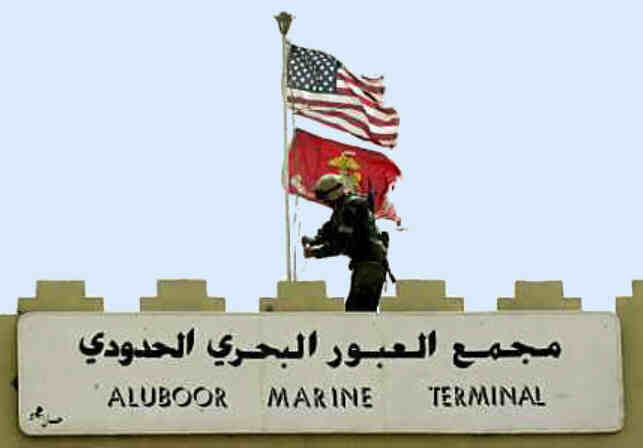 On
a 21 March:
On
a 21 March: 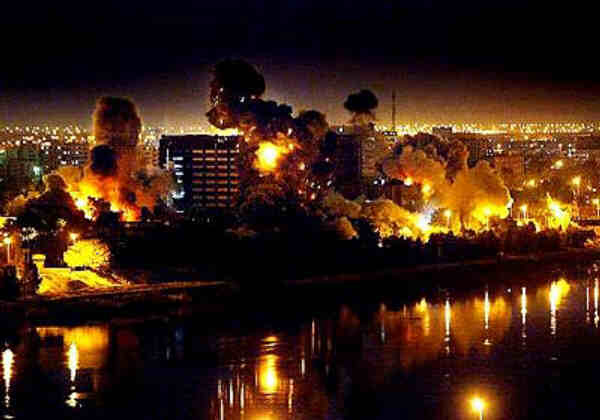
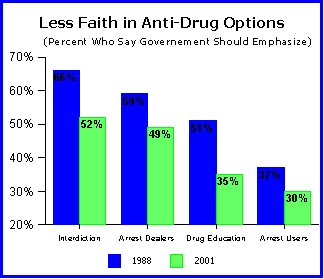

 2004
Two Iraqi civilians by two rockets which miss their target, the
US-led occupation headquarters in Baghdad, Iraq. Five Iraqi civilians are
wounded. One US soldier is wounded by a third rocket which hits the headquarters
compound.
2004
Two Iraqi civilians by two rockets which miss their target, the
US-led occupation headquarters in Baghdad, Iraq. Five Iraqi civilians are
wounded. One US soldier is wounded by a third rocket which hits the headquarters
compound. 